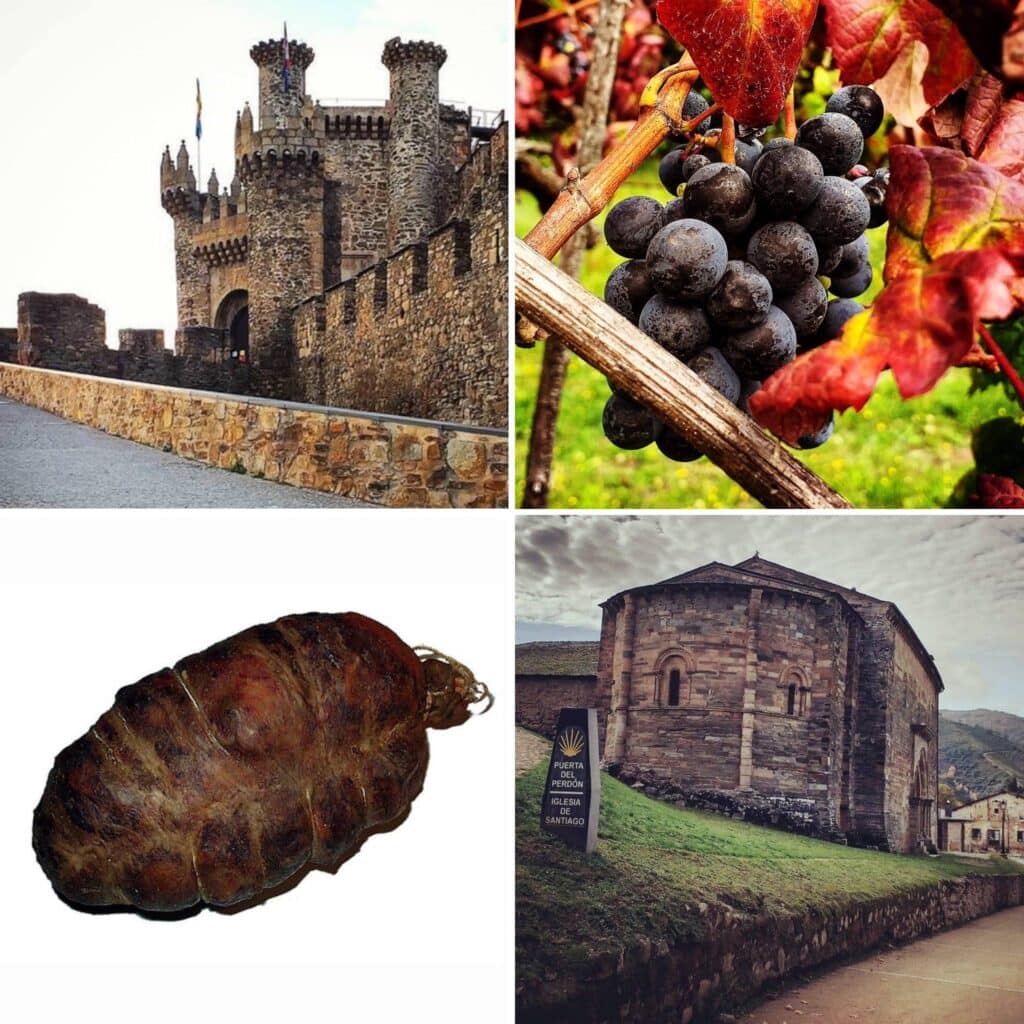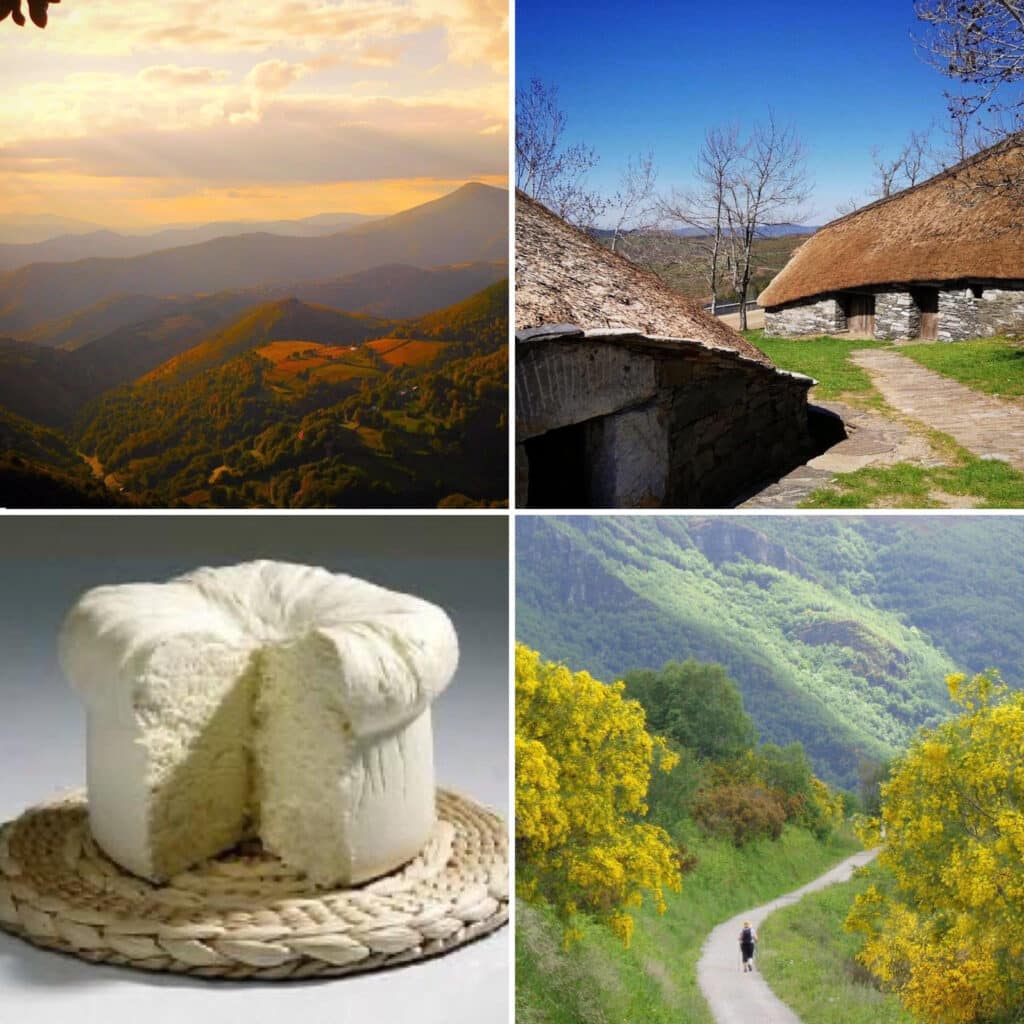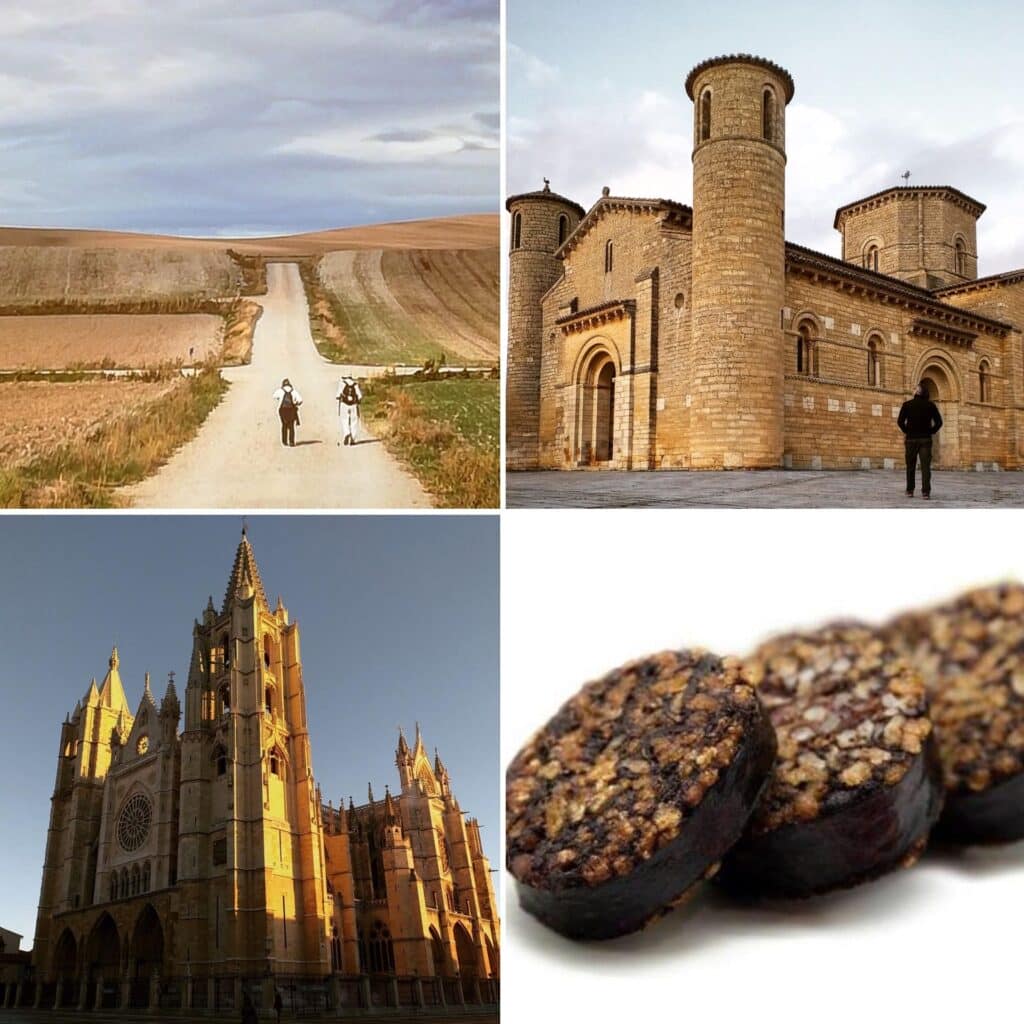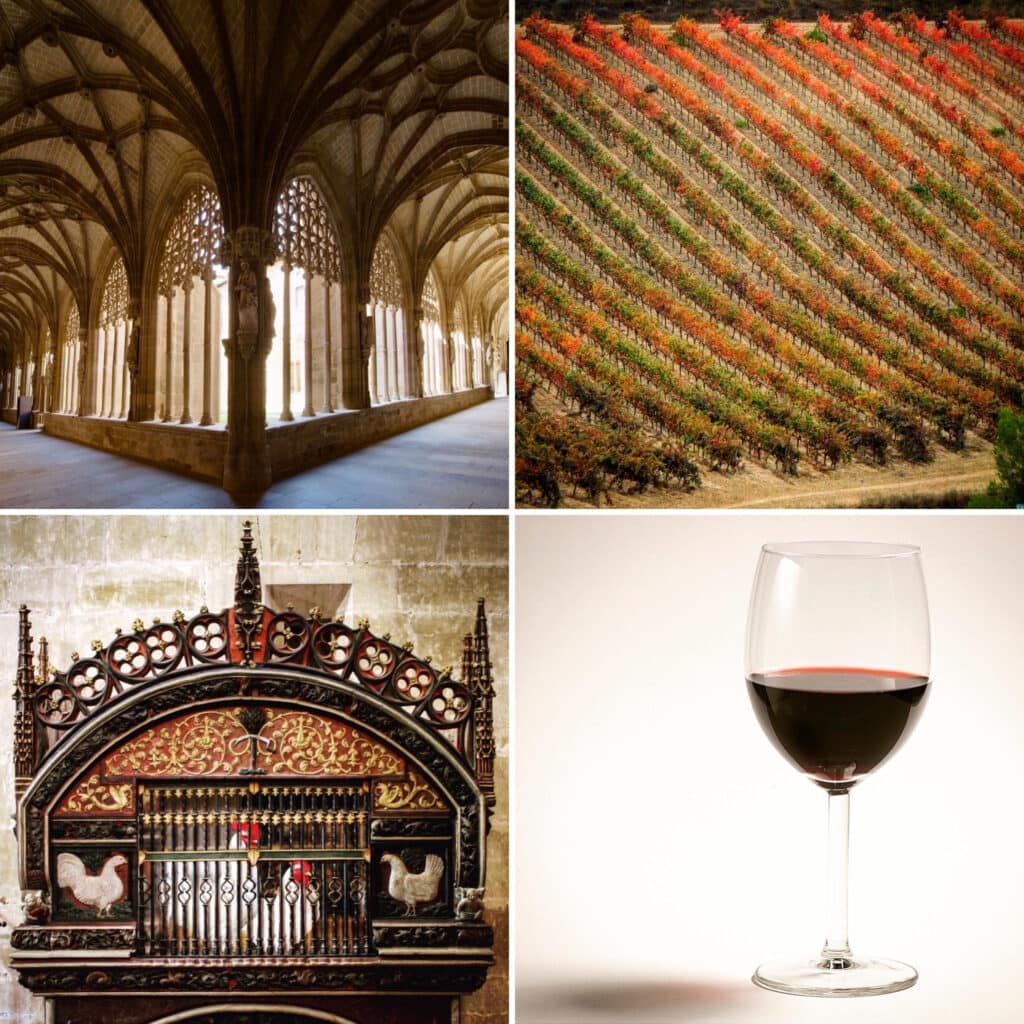La Maragatería
On the Camino, this historical region starts in Astorga and ends at the Iron Cross. It is now best known for its stunning scenery, its picturesque villages and its hearty cuisine!
Featured below from left to right: The stunning Episcopal Palace in Astorga, the picture-perfect village of Castrillo de los Polvazares, the renowned ‘Cocido Maragato’ stew, and the Iron Cross (‘Cruz de Hierro’).

El Bierzo
On the Camino, this lush region roughly starts in Molinaseca and ends in Vega de Valcarce. It is now best known for being the gateway to Galicia, its unique heritage and its wonderful wine!
Featured below from left to right: The imposing Knights Templar Castle in Ponferrada; a mencía grape, the delicious local variety; a ‘botillo’, the local lunch specialty (stuffed intestine, goes well with mencía wine); and the Church of Santiago in Villafranca del Bierzo with its Door of Forgiveness in case you cannot make it to Compostela.

Los Ancares
On the Camino, this mountainous region starts in O Cebreiro and ends in Triacastela. It is now best known for being the mountainous gateway to Galicia, its Celtic heritage and its unspoiled landscape!
Featured below from left to right:
Sunrise over the Ancares looking east; traditional dwellings called ‘pallozas’; the scrumptious local O Cebreiro cheese; and a view of the Camino de Santiago looking west.

Euskal Herria
On the Camino, Euskal Herria (Land of the Basque) starts in southwestern France before you enter Spain and ends as you leave Navarre. The Basque are fiercely proud of their unique language, their distinctive culture, and their fascinating history.
Featured below from left to right: Signage on the Camino (first in Basque and then in Spanish), the stunning Pyrenees, some delicious pintxos (Basque tapas), and the San Fermines in Pamplona.

La Meseta
The Meseta roughly starts after Burgos and ends in León, representing at least a quarter of the French Camino. The Meseta is wide, open spaces, as far as the eye can see. It’s also ageing towns, steeped in history, that have watched millions of pilgrims go by. The Meseta leaves no one indifferent and is almost always a transformative experience.
Featured below from left to right: the Camino, the picture-perfect Romanesque church in Frómista, the cathedral in León and some delicious morcilla (blood sausage) from Burgos.

La Rioja
La Rioja The Camino crosses the entire Autonomous Community of La Rioja. However, the Rioja wine region also includes a bit of southwest Navarra and most of the southern Basque Country. Indeed, La Rioja is a synonym of Spain’s best reds and tempranillo grapes. It is also the gateway to Castile and the place of some of the most unusual traditions and legends along the Camino.
Featured below from left to right: the cloister at the Monastery of Santa María in Nájera, autumn vineyards, the chicken coop inside the Cathedral of Santo Domingo de la Calzada and glass of Rioja!






